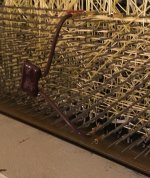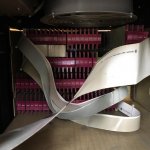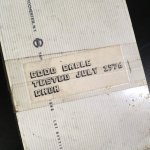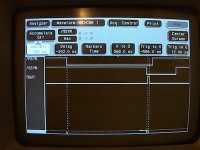fritzm
Experienced Member
Hi folks!
Kicking off a thread here because I'm just starting to dive in on the storage subsystem of my PDP-11/45: and RK11-C + 2x RK05, and I'll be wanting to take advantage of the collected wisdom and good advice here. There's been a fair amount of talk on RK05s here and on the cctalk, and I've read up on all of that and am pretty encouraged. So far, I've gone through cleanup/refurb of the H720e supply for the RK11-C, and have dusted, cleaned, and re-racked the controller.
First problem: there are a handful of resistors and caps mounted directly on the backplane via crimp connectors that slide over the wire-wrap posts. A few of these connectors have broken off and will need to be replaced. I've had some trouble this morning trying to source replacement connectors, but I'm sure its just because I don't know correct names under which to search? What I'm after is a single crimp connector that will connect snugly over a .025 square wire wrap post. The originals look like that are gold-plated brass or tin. Picture below showing some of the undamaged and damaged connectors. Any pointers appreciated!
cheers,
--FritzM.
[Edit: from cctalk: Wouldn't those be plain old 0.025" square socket pins on a strip? http://www.ebay.com/itm/Gold-plated...hash=item33b3bf9e55:m:mkh7h_knuzj5K39hpUzgHaQ]

Kicking off a thread here because I'm just starting to dive in on the storage subsystem of my PDP-11/45: and RK11-C + 2x RK05, and I'll be wanting to take advantage of the collected wisdom and good advice here. There's been a fair amount of talk on RK05s here and on the cctalk, and I've read up on all of that and am pretty encouraged. So far, I've gone through cleanup/refurb of the H720e supply for the RK11-C, and have dusted, cleaned, and re-racked the controller.
First problem: there are a handful of resistors and caps mounted directly on the backplane via crimp connectors that slide over the wire-wrap posts. A few of these connectors have broken off and will need to be replaced. I've had some trouble this morning trying to source replacement connectors, but I'm sure its just because I don't know correct names under which to search? What I'm after is a single crimp connector that will connect snugly over a .025 square wire wrap post. The originals look like that are gold-plated brass or tin. Picture below showing some of the undamaged and damaged connectors. Any pointers appreciated!
cheers,
--FritzM.
[Edit: from cctalk: Wouldn't those be plain old 0.025" square socket pins on a strip? http://www.ebay.com/itm/Gold-plated...hash=item33b3bf9e55:m:mkh7h_knuzj5K39hpUzgHaQ]

Last edited:






